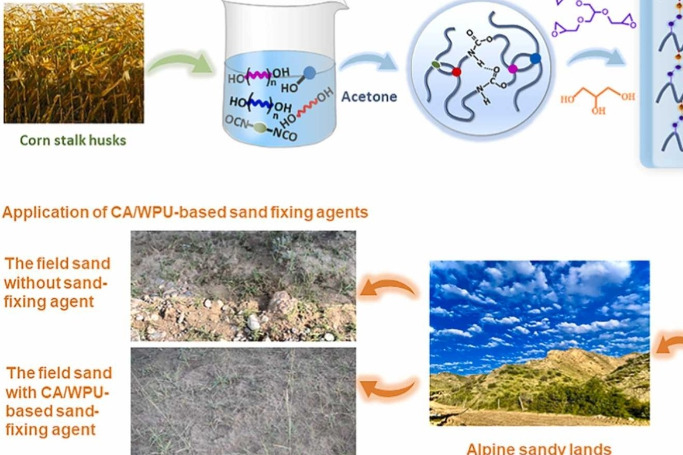Chinese scientists find world’s oldest cheese buried with mummies in Xinjiang desert
Chinese scientists say they have discovered the world’s oldest known cheese, dating back around 3,500 years, buried alongside mummies in the Tarim Basin in far west China.
The team found the DNA of goats and fermenting microbes from Bronze Age dairy samples scattered around the necks of mummies in coffins at the Xiaohe cemetery in Xinjiang Uygur autonomous region.“It appears that the Xiaohe population actively adopted animal husbandry from steppe culture and that the related fermented milk product, kefir cheese, became an important part of the Xiaohe culture and subsequently spread further in inland East Asia,” they said in a new study.
The researchers from the Chinese Academy of Sciences, the University of the Chinese Academy of Sciences, Peking University Third Hospital, the Xinjiang Cultural Relics and Archaeology Institute and Xinjiang University published their findings in the peer-reviewed journal Cell on Wednesday. Kefir is a fermented drink made with milk and kefir grains and has a thinner consistency than yogurt drinks. It is drained to produce a soft cheese.
The three dairy samples analysed in the study have been identified as kefir cheese because of the “presence and abundance of proteins from ruminant milk, lactic acid bacteria and yeast in the samples”, the paper states. The Tarim Basin, a barren desert in Xinjiang, is home to Bronze Age mummies dating back around 3,300 to 3,600 years ago.
Their distinct “Western” physical appearance, clothing and apparent farming practices involving cattle, wheat and kefir cheese have for decades puzzled scientists who have been keen to find out the genetic origins and ancestry of the mummified bodies.
In 2021, an international team of scientists found that the mummies were direct descendants of the Ancient North Eurasians, instead of newcomers to the region.
In the latest study, the Chinese team found that the kefir cheese was made with the milk of cows and goats, which they said was “consistent with the historical record of kefir production using ruminant milk”. They said the cheese production process significantly reduced the lactose content, which helped the Xiaohe people – who were “genetically lactose intolerant” – consume dairy.
“Making kefir cheese was likely a measure that not only extended the shelf life of raw milk but also mollified gastrointestinal disturbance caused by lactose,” they said. According to lead author Fu Qiaomei, the discovery also supports the idea that “kefir culture” has existed in the Xinjiang region since the Bronze Age, challenging a long-standing belief that the fermented milk drink originated solely in the North Caucasus region in what is now Russia.
“Although it was previously suggested that kefir was spread from the Northern Caucasus to Europe and other regions, we found an additional spreading route of kefir from Xinjiang to inland East Asia,” the team wrote. They said kefir’s dispersal was “likely accompanied by cultural interactions, as various archaeological evidence suggests cross-regional exchanges between the Bronze Age Xinjiang and Tibetan populations”.
“As kefir can only be produced through inoculating milk using existing kefir grains, these fermenting microbes serve as an ideal proxy to track the history of kefir production,” they said. Fu, director of the molecular palaeontology laboratory at the Chinese Academy of Sciences, said the discovery of ancient cheese presented a rare opportunity to understand ancient diets and cultures, as preserving food over thousands of years was “extremely difficult”.
Two decades ago, when archaeologists found a mysterious white substance smeared on the heads and necks of several Xiaohe mummies, the researchers suspected it might be a type of fermented dairy product but were unable to pinpoint exactly what it was. Thanks to advancements in ancient DNA analysis, Fu’s team solved the mystery in what was the world’s first metagenomic study of ancient dairy samples, according to the Chinese Academy of Sciences.
“This is an unprecedented study, allowing us to observe how a bacterium evolved over the past 3,000 years,” Fu said. “By examining dairy products, we’ve gained a clearer picture of ancient human life and their interactions with the world.”
We are thrilled to extend a warm welcome to the China Scientist Awards!
Join us for the China Scientist Awards, a premier event in the realm of research. Whether you're joining virtually from anywhere in the world, this is your invitation to explore and innovate in the field of research. Become part of a global community of researchers, scientists, and professionals passionate about advancing research.
visit: chinascientist.net
Nomination Link: https://chinascientist.net/award-nomination/?ecategory=Awards&rcategory=Awardee
Registration Link:https://chinascientist.net/award-registration/
For inquiries, contact us at contact@chinascientist.net
-------------------------------------
Other website:
visit: chinascientist.net
Nomination Link: https://chinascientist.net/award-nomination/?ecategory=Awards&rcategory=Awardee
Registration Link:https://chinascientist.net/award-registration/
For inquiries, contact us at contact@chinascientist.net
-------------------------------------
Other website:




Comments
Post a Comment